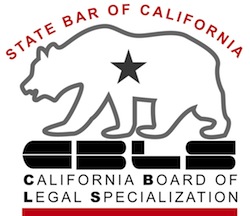You can’t decide between bankruptcy chapters until you really understand how Chapter 13 works to keep you in control.
Control of your assets, control of your payment plan, control of who gets paid.
You want to be at the helm of your case. Chapter 13 can do that.
Chapter 13 protects more than assets
Chapter 13 bankruptcy is about protecting assets, I read somewhere on the internet.
That sells Chapter 13 short by half in my view.
It’s not just about assets.
Many of my Chapter 13 clients have no meaningful assets to protect. Assets to protect isn’t what made 13 right for them.
It’s that Chapter 13 kept them in control.
- Control of creditor interaction.
- Control of income.
- Control of whether to stay in bankruptcy
In the face of a creditor who is entitled to levy, garnish, and harass, Chapter 13 lets the debtor-client stay at the helm of their financial life.
You call the shots in Chapter 13
The basic difference between Chapter 7 and Chapter 13 is the role of the bankruptcy trustee. In Chapter 7, the trustee may take possession of your non-exempt assets to sell for benefit of creditors.
A Chapter 7 trustee is entitled to sue people you’ve paid off just before bankruptcy and to assert his own view of the value of your assets. Chapter 7 can be uncomfortable and risky.
In Chapter 13, you commit to a payment plan that gives creditors at least what they would have gotten if a Chapter 7 trustee scooped up your stuff, sued your family members, and otherwise wreaked havoc in your life.
You stay in possession of your assets and in control of your income.
You write the plan that says how much you pay into your plan a month, within the requirements of the law. The Chapter 13 trustee just cashes your check, and pays creditors as the plan directs.
The automatic stay prevents the continuation of litigation or collection action outside the court.
You’ve rounded up all the folks to whom you owe money and corralled them in the bankruptcy court, where the bankruptcy rules apply.
You’re on your way to getting control of the situation.
Even judgment creditors bound
The appeal of Chapter 13 for several of my recent clients involves the way Chapter 13 limits how much of their income going forward is exposed to judgment creditors.
Outside of bankruptcy, a creditor with a California judgment can reach up to 25% of a person’s after-tax paycheck. I don’t know many individuals who can meet their other financial obligations with only 75% of their paycheck.
Sure, you can argue that you can’t live on 75%, but you have to work through the state courts to reduce the amount a judgment creditor can get.
In Chapter 13, the means test, which I usually detest, saves the day. It has a formula for calculating what is genuinely available to pay run-of-the-mill creditors.
That’s creditors as a whole.
Lumped together, creditors share their slice of the available pie.
General unsecured creditors in Chapter 13, under the means test, get what’s left after:
- Rent or mortgage payments
- Car payments
- Health care
- Child care
- Delinquent taxes
- Support of dependent elders
I don’t think I’ve ever seen a Chapter 13 payment to general unsecured creditors that equaled 25% of my client’s after tax income.
So, in addition to simplifying the process of how much a legitimate creditor gets, almost invariably, Chapter 13 reduces the absolute amount that the creditors get.
And the Chapter 13 debtor is assured of having control of his paycheck so his current living expenses are met.
Note that this analysis applies even to debts like student loans: while the student loan may survive the Chapter 13 discharge, the amount paid out on the loan is limited by the means test and the claims of other creditors.
Time is on your side
Chapter 13 has a maximum length of 5 years. The life of a judgment is generally far longer. A California judgment is good for 10 years, and can be renewed for another 10.
So a Chapter 13 plan can halve the length of time your earnings are exposed to your creditor.
It may not be pleasant to be in bankruptcy for 5 years, but it shortens duration of the pain considerably.
Another time-related benefit of 13 is the durability of the Chapter 13 plan. Plan terms are worked out and approved by the court at the beginning of the case. Absent a marked improvement in your ability to pay creditors, the plan controls.
Chapter 13 has none of the periodic judgment-debtor examinations that are features of state law. Your time commitment to managing old debts in 13 is limited.
Chapter 13 keeps you in control
So, Chapter 13 isn’t just about protecting assets. If you have a paycheck, or a small business, and have creditors you can’t pay, Chapter 13 works to let you to chart a course out of debt, on your terms.
More
How much is my Chapter 13 payment
Dealing with taxes in bankruptcy
Image courtesy of Terence Faircloth under a Creative Commons license.






